This morning, I catch an early flight from Gondar to Axum, farther north in Ethiopia’s Tigray region. I am met by representatives of our implementing partners, Glimmer and Relief Society of Tigray (REST). REST has been a valued partner since the inception of W2T when we worked together to fund our first 12 project near Axum. Now REST is the largest non-government organization (NGO-not for profit) in Ethiopia that concentrates solely on water for rural communities in need. In 2013, they will have the capacity to complete 1,200 water projects in the Tigray region.
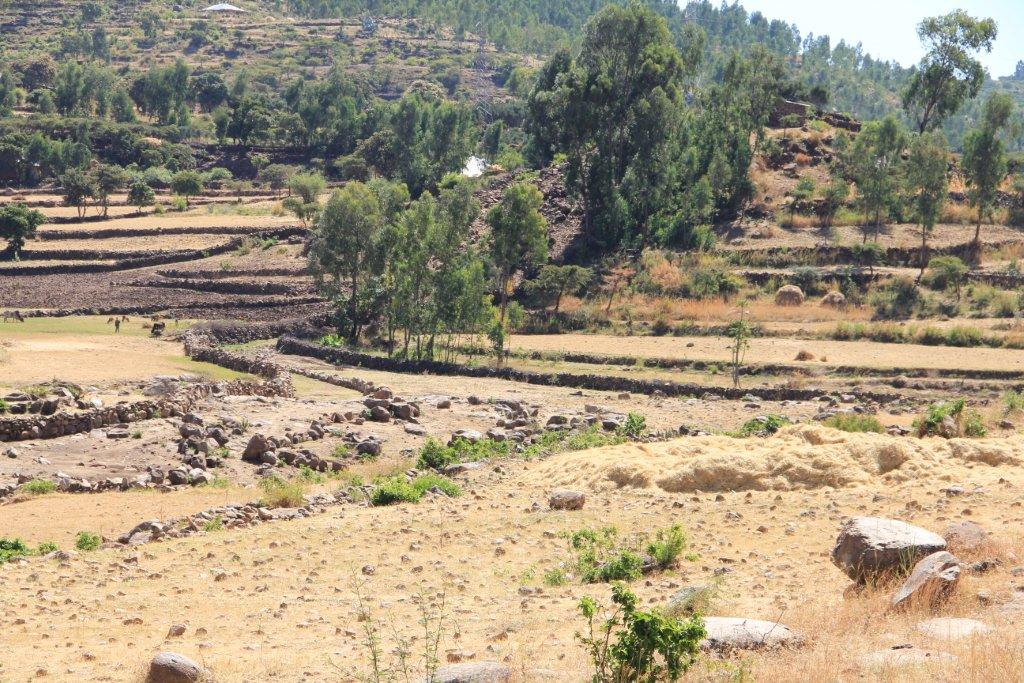
Tigray reminds me of some parts of Texas a lot. The picture above is typical of the countryside throughout Tigray…..hot, dusty, lots of rocks and few trees. With just a little bit of imagination, you could be looking at El Paso!
In 2012, W2T has funded 72 projects with REST. Most of those projects are located in the Seglamen area of Tigray, near Axum, with the remainder in Senale, near Mekele. All of the projects visited today are from the Seglamen area. Our first stop is the community of May Quo.
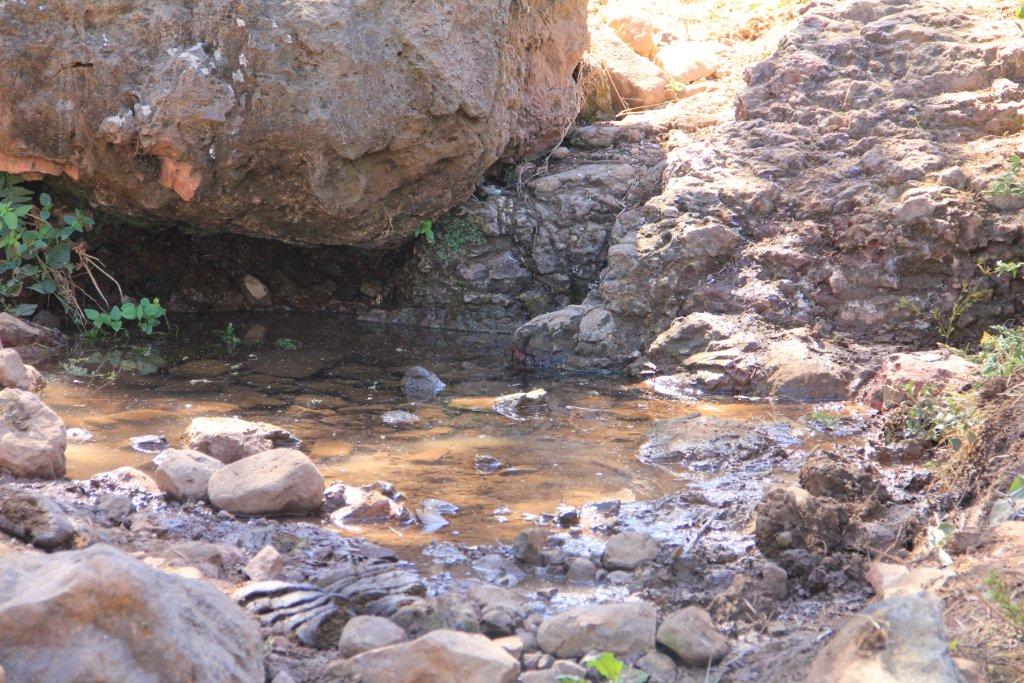
A year ago, we visited this same community to witness about 10 women and children gathers at this contaminated spring gather water. As the only water supply nearby, this watering hole was shared by livestock and people at the same time.
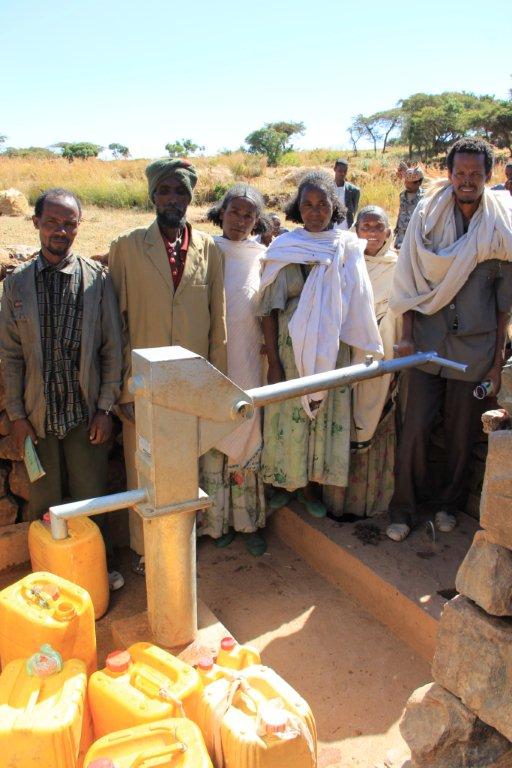
Today, no one is at the spring and we get to meet the Water Committee of May Quo, a shallow borehole project completed about 3 months ago. In visiting with the community, we learn that they are carrying only about 1 or 2 jerry cans to their homes per day, when then average family of 5 should be using 5 per day. They voice concern that the water source might run dry if they use too much (their spring use to run dry in the dry season!). Our partners at REST are quick to reassure them that the well has been properly sized for the 70 families using the project and they should use more of the clean water as it will improve the health of their families.
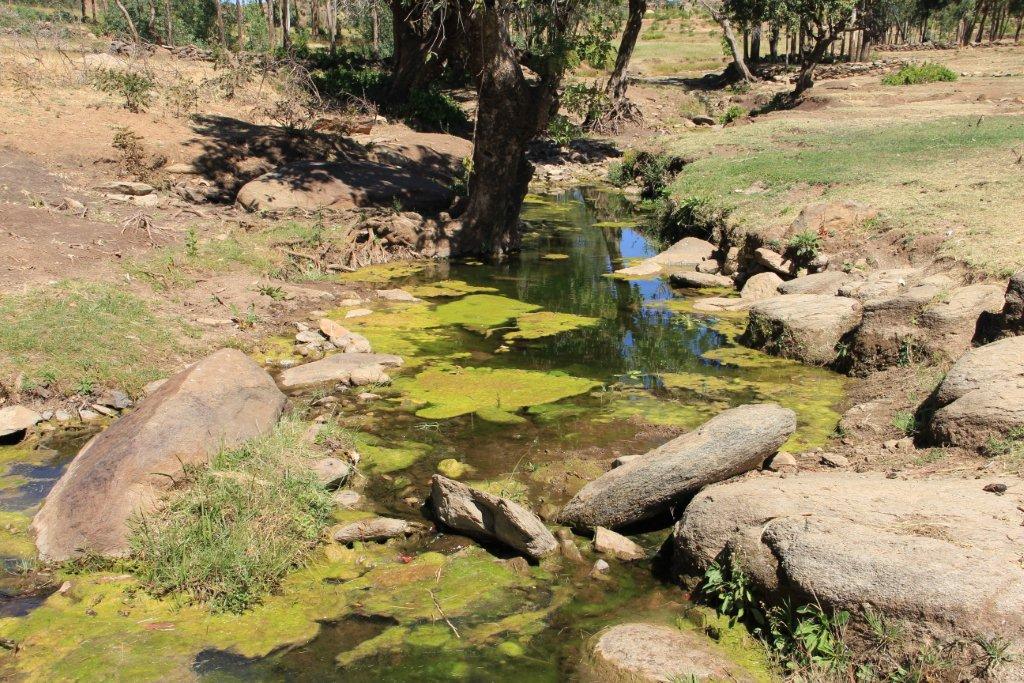
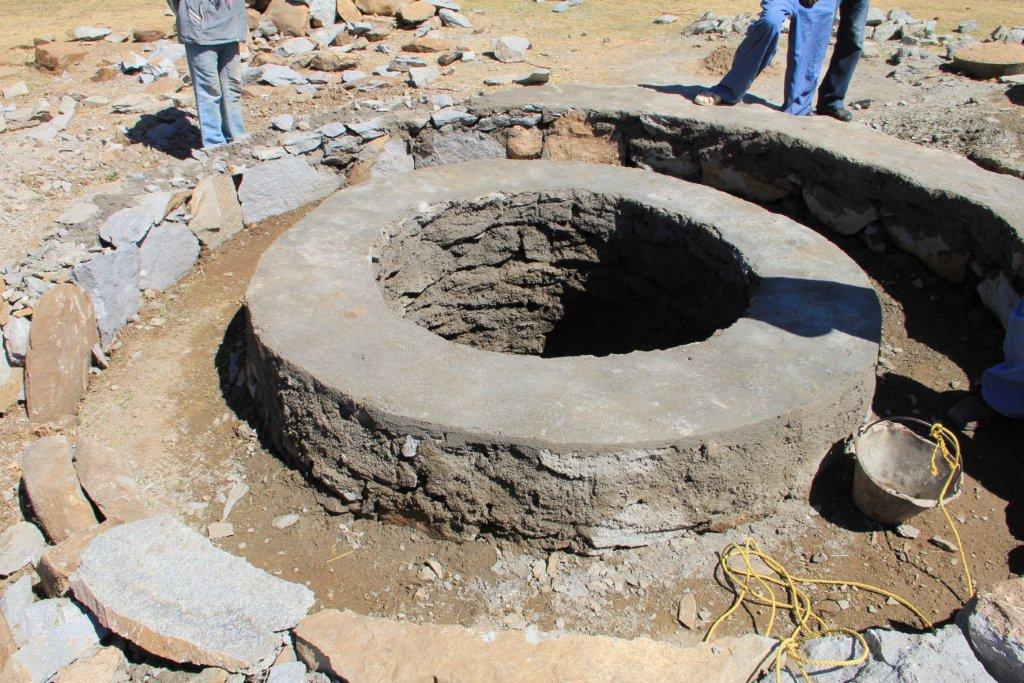
A short distance from May Quo, we stop to visit the project site for the community of Tahtay May Shum. As we walk to the project site, we pass the brackish green creek that serves as the community’s water source…..again totally contaminated and shared with the local livestock. The Tahtay May Shum hand dug well (HDW) is under construction and will be finished for use by the community in the next month. The well has required a lot of blasting as the construction crew hit solid rock almost immediately. The well is currently about 30 feet deep and the technician expected they would need to go another 10 feet or so
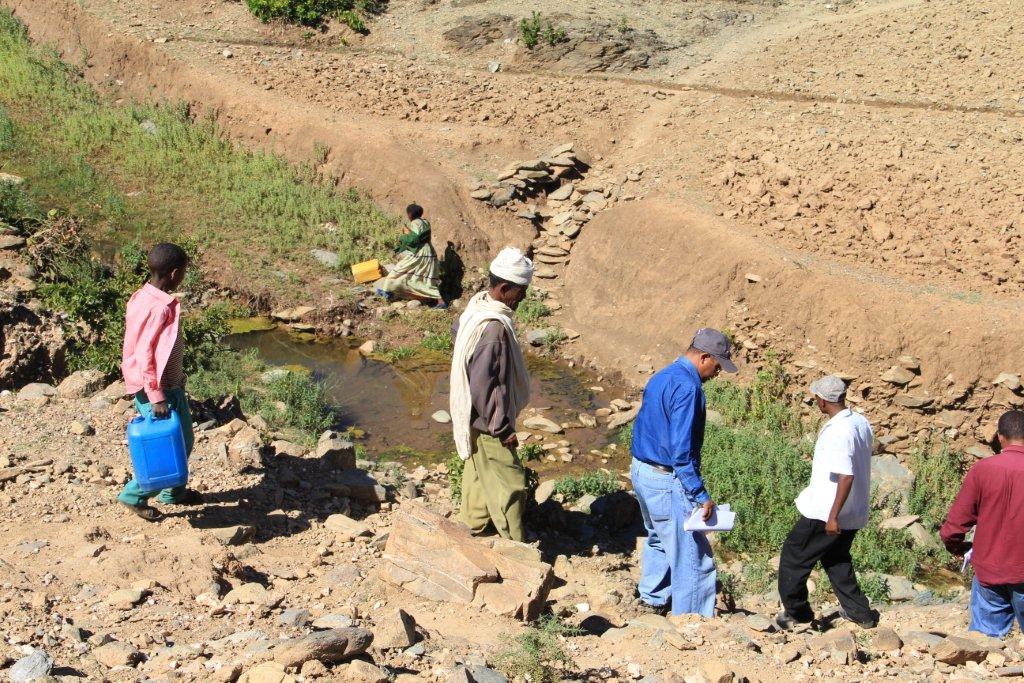
Our next stop requires about a 40 minute walk over some very rocky, hilly terrain and across several creeks. The May Gbta community is located in a valley that has no access by vehicle. As we descent into the valley we are reminded that the community contribution to this project many hours of back breaking work hauling the concrete, gravel and sand required to construct the HDW.
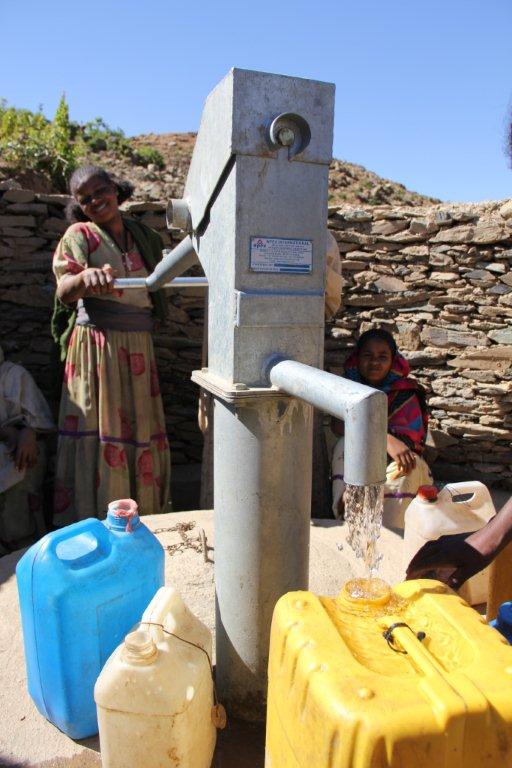
When we arrive at the site, it is in use by several families that have come to greet us and fetch water. We exchange greetings and they express their gratitude for gift of clean water. The head of the Water Committee reminds us that there are other communities that are close by that need water as well and asks that we consider their needs as well. The good news is that Glimmer and REST has a three year plan to have 100% water coverage for the Seglamen area, so they are assured that the community’s needs will be addressed.
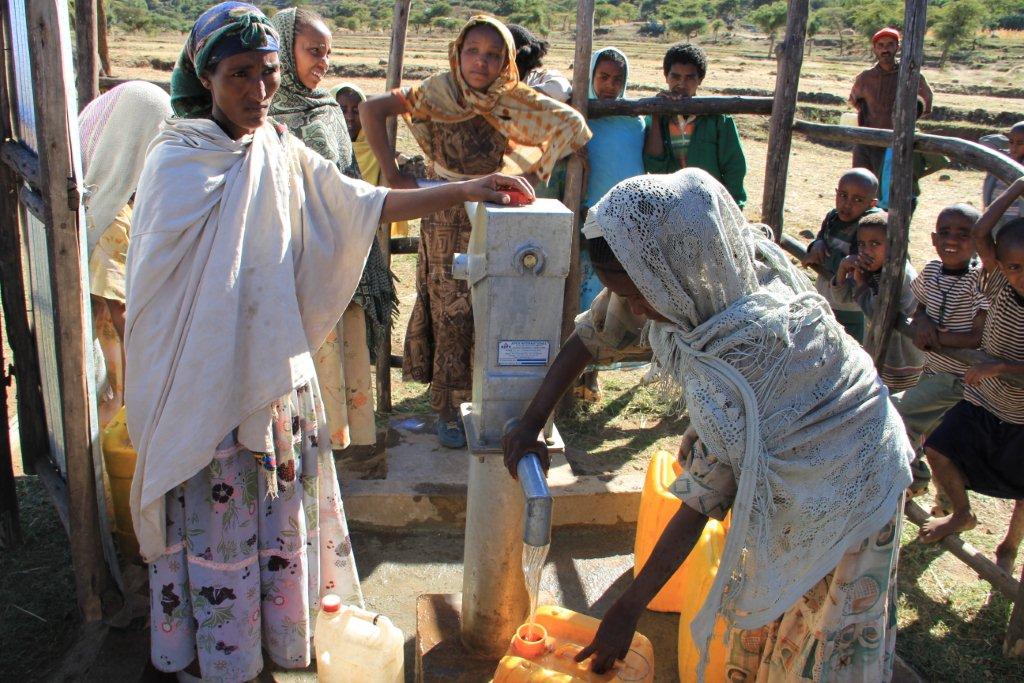
Our final stop of the day is at the community of May Tsada. This project is another shallow borehole that was completed about six months ago. We were greeted by the smiling faces of the Water Committee who express their gratitude for the project and commented how important clean water is to the future of their community. They also share their saving passbook with us show their commitment of keeping the maintenance fund growing.
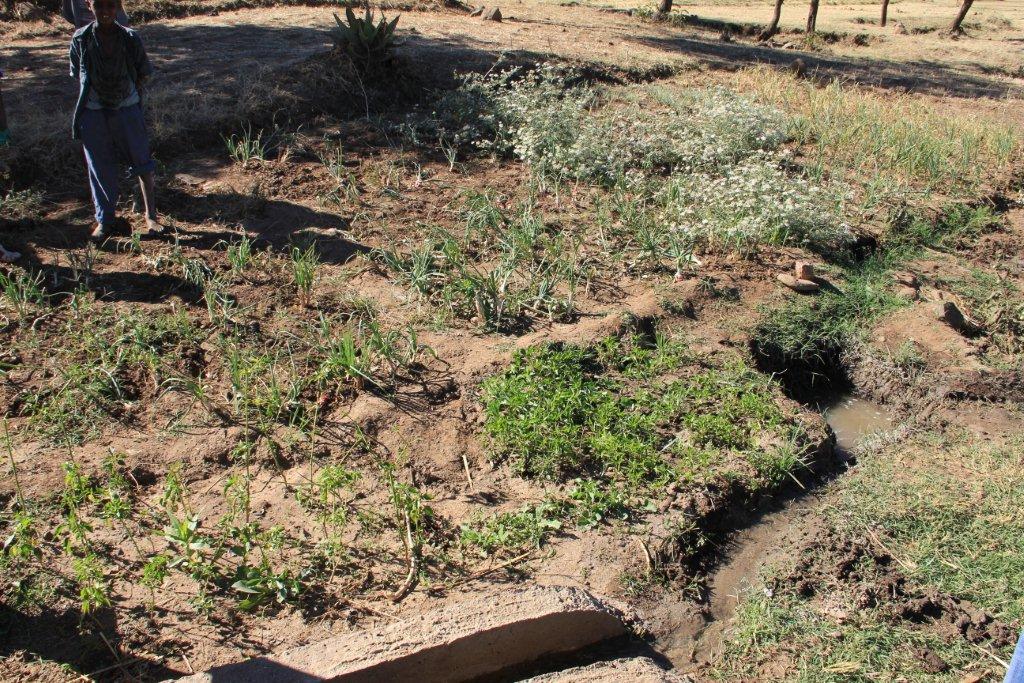
The guard for the project (also a member of the Water Committee) showed real ingenuity to make sure that none of the water coming from the project is wasted….not even from the runoff. In the picture above your can see the drainage channel from the pump area in the lower left of the picture. The guard created a small collection hole for the runoff. Each day, he hand waters a garden he has started near the project…..growing peppers, onions, garlic and some spices.
This morning, I catch an early flight from Gondar to Axum, farther north in Ethiopia’s Tigray region. I am met by representatives of our implementing partners, Glimmer and Relief Society of Tigray (REST). REST has been a valued partner since the inception of W2T when we worked together to fund our first 12 project near Axum. Now REST is the largest non-government organization (NGO-not for profit) in Ethiopia that concentrates solely on water for rural communities in need. In 2013, they will have the capacity to complete 1,200 water projects in the Tigray region.

Tigray reminds me of some parts of Texas a lot. The picture above is typical of the countryside throughout Tigray…..hot, dusty, lots of rocks and few trees. With just a little bit of imagination, you could be looking at El Paso!
In 2012, W2T has funded 72 projects with REST. Most of those projects are located in the Seglamen area of Tigray, near Axum, with the remainder in Senale, near Mekele. All of the projects visited today are from the Seglamen area. Our first stop is the community of May Quo.

A year ago, we visited this same community to witness about 10 women and children gathers at this contaminated spring gather water. As the only water supply nearby, this watering hole was shared by livestock and people at the same time.

Today, no one is at the spring and we get to meet the Water Committee of May Quo, a shallow borehole project completed about 3 months ago. In visiting with the community, we learn that they are carrying only about 1 or 2 jerry cans to their homes per day, when then average family of 5 should be using 5 per day. They voice concern that the water source might run dry if they use too much (their spring use to run dry in the dry season!). Our partners at REST are quick to reassure them that the well has been properly sized for the 70 families using the project and they should use more of the clean water as it will improve the health of their families.


A short distance from May Quo, we stop to visit the project site for the community of Tahtay May Shum. As we walk to the project site, we pass the brackish green creek that serves as the community’s water source…..again totally contaminated and shared with the local livestock. The Tahtay May Shum hand dug well (HDW) is under construction and will be finished for use by the community in the next month. The well has required a lot of blasting as the construction crew hit solid rock almost immediately. The well is currently about 30 feet deep and the technician expected they would need to go another 10 feet or so

Our next stop requires about a 40 minute walk over some very rocky, hilly terrain and across several creeks. The May Gbta community is located in a valley that has no access by vehicle. As we descent into the valley we are reminded that the community contribution to this project many hours of back breaking work hauling the concrete, gravel and sand required to construct the HDW.

When we arrive at the site, it is in use by several families that have come to greet us and fetch water. We exchange greetings and they express their gratitude for gift of clean water. The head of the Water Committee reminds us that there are other communities that are close by that need water as well and asks that we consider their needs as well. The good news is that Glimmer and REST has a three year plan to have 100% water coverage for the Seglamen area, so they are assured that the community’s needs will be addressed.

Our final stop of the day is at the community of May Tsada. This project is another shallow borehole that was completed about six months ago. We were greeted by the smiling faces of the Water Committee who express their gratitude for the project and commented how important clean water is to the future of their community. They also share their saving passbook with us show their commitment of keeping the maintenance fund growing.

The guard for the project (also a member of the Water Committee) showed real ingenuity to make sure that none of the water coming from the project is wasted….not even from the runoff. In the picture above your can see the drainage channel from the pump area in the lower left of the picture. The guard created a small collection hole for the runoff. Each day, he hand waters a garden he has started near the project…..growing peppers, onions, garlic and some spices.

About The Author: Meredith
More posts by Meredith